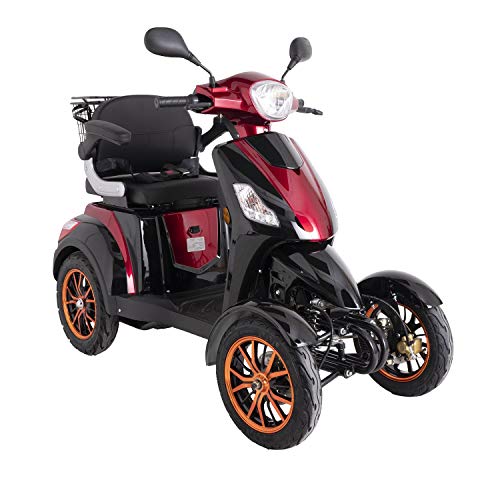Scooter Green Power
Scooters are a fun and safe way to travel. They are also eco green. It's important that you do your research prior to purchasing one.
While they are carbon-free at face value, scooters have some hidden costs. The mining and production processes used by the batteries used to power electric scooters generate significant amounts of carbon dioxide. Transporting scooters from places the point where riders leave them to charging stations is also a contributor to their environmental footprint.
Battery Life
Battery is among the most crucial components of any scooter. It has a significant impact on the eco-friendliness of your scooter. When the battery is dead, it releases toxic chemicals that can have an enormous ecological and economic impact.
Electric scooters are extremely efficient in energy use. They use a fraction of what cars do to travel the same distance. This helps reduce carbon dioxide and climate change as well as traffic congestion. However, electric scooter green do produce little carbon dioxide when charging. If it is derived from renewable sources, it could make the e scooter even more eco friendly.
green power mobility scooters near me come with interchangeable batteries that can be used to charge other scooters in the fleet. green mobility scooter means there is less requirement for companies to transport them to recharging. Some companies are also testing hyper-local energy production. Grids can make use of the batteries' power to balance supply and demand.
If you are planning to utilize your scooter for longer journeys you should consider buying larger capacity batteries, or a second one that can be swapped. This will allow you to travel longer distances without having to stop and recharge the battery every so often. This is important especially if you live in an area that is subject to extreme weather conditions. It is also a good idea to recharge the battery before storing it for months or weeks at the same time. If you don't then the battery might not be able to hold a charge when you need it again. This could be inconvenient as well as risky.
Overall electric scooters have significantly lower environmental impact than cars and other modes of transportation. They emit less greenhouse gases which contribute to global warming and use less raw materials to manufacture. They can be charged with clean energy which can reduce their carbon footprint. When contemplating the sustainability of a scooter, it is important to take into consideration its entire life cycle. This includes the manufacturing process, the energy used to charge it, and its disposal.
Design
Electric scooters' design can be a major influence on their green credibility. Scooters with regenerative brake systems, for instance, can convert the energy that would be lost otherwise into extra battery life, which allows them to be more efficient in their charging. Many scooters are also designed for shorter distances, reducing the number of car trips needed. And, unlike traditional vehicles, scooters emit no carbon dioxide during use.
It is important to take into account the environmental impact of electric scooters' entire lifecycle. This includes the extraction and manufacture of raw materials, as well as the disposal at the end of life. The manufacturing of lithium-ion batteries is particularly energy intensive, and can lead to habitat destruction, soil and water pollution as well as greenhouse gas emissions. In addition, transport and mining of raw materials can also have a significant impact on the environment.
Another major issue with scooters is their inability to last. The average scooter lasts about a month or two on the streets before being taken away. This can require scooter companies to mine more aluminum and engage in more shipping and other resource-intensive activities. Additionally, since the majority of scooters are rented instead of owned, the scooters have to be taken to charging stations (often by automobiles) when they are empty of juice.
At the time of end of life, scooters could contain hazardous waste that can cause harm to the health of the public and the environment. If not recycled properly, the waste can end in rivers or landfills and cause harm to humans and wildlife.
While scooters are generally better for the environment than traditional vehicles, there are still several issues that must be addressed in order to make them eco-friendly. If all scooters are made of 100% recyclable materials and the power source that powers them is generated from renewable sources, they could be a carbon-free mode of transportation.
Maintenance

An electric scooter may be more affordable than a traditional vehicle, but it still requires regular maintenance. The primary component is the battery pack. It will need to be recharged regularly and replaced when it is nearing the end of its lifespan. This is also dependent on the speed controller. This will affect the performance if it is not working properly.
If the scooter stops or stops while riding, this usually indicates a faulty battery pack. It could also be a fuse or a battery charger that isn't working correctly. Examine the indicators on the charger to make sure they're green (charging) and not red (off). Even if you don't use the scooter, it's a good practice to charge it each time it is in storage.
Another issue that is common is a faulty normally closed brake lever switch. To check for this, disconnect the wire from the switch for the brake lever and connect the terminals in the controller's connector the wire is unplugged from. If the scooter continues to run the switch could be faulty.
Scooter services allow people to drive trucks and cars all the time, and they bring back electric scooters that are out of juice. This kind of service helps keep the fleet in working in good working order. This service allows them to recharge their batteries before the next trip. A lot of people don't have this option and have to replace their scooters whenever they run out of power.
